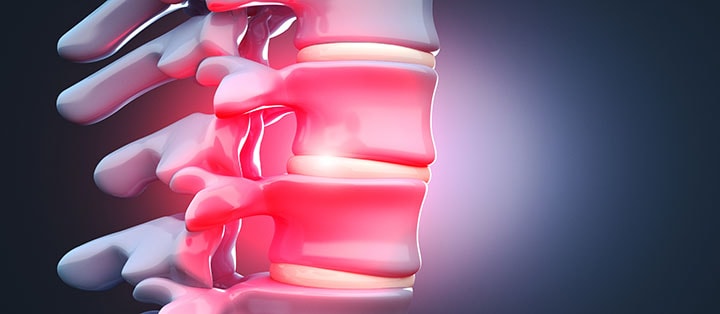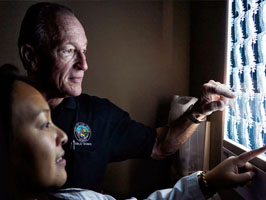Herniated disc is a relatively common condition that can occur anywhere along the spine, but most often affects the lower back or neck region. Also known as a slipped disc or ruptured disc, a herniated disc develops when one of the cushion-like pads between the vertebrae moves out of position and presses on adjacent nerves.
Herniated discs are typically caused by overuse injuries or trauma to the spine; however, disc conditions can also develop as a result of the normal aging process. It is also known that there is a genetic factor that contributes to the development of disc degeneration and herniated disc. In most cases, a herniated disc in the lower back will heal within six months, as the size of herniation shrinks with time via resorption. Surgery may be needed if medication, physical therapy and other treatments fail.
The foraminal passageways, through which important nerves branch away from the spinal cord and travel to other areas of the body, are particularly susceptible to damage and decline. “Foraminal stenosis” occurs when these canals become obstructed or narrowed. Usually, foraminal stenosis becomes noticeable when a nerve becomes compressed, which leads to pain, discomfort and other irritating complications. Although foraminal narrowing can become a serious condition, it is generally easily treatable with prompt medical attention and proper care.

Herniated Disc Causes
As we age, the spinal discs gradually lose fluid volume. This process starts at about age 30 and progresses slowly, over time. As the discs dry out, microscopic cracks or tears can form on the outer surface, causing it to become brittle, weak and more susceptible to injury. The most common causes of herniated disc are:• Wear and tear: Discs dry out and aren’t as flexible as they once were.
• Repetitive movements: Work, lifestyle, and certain sports activities that put stress on the spine, especially the lower back, further weaken an already vulnerable area.
• Lifting the wrong way: Never lift while bent at the waist. Proper lifting entails lifting with your legs and a straight back.
• Injury: High-impact trauma can cause the disc to bulge, tear or rupture.
• Obesity: Carrying excess weight puts an undue amount of strain on the spine.
• Genetics: There are some genes that are more commonly present in individuals with disc degeneration. More research is needed to investigate the role of these genes—they could be targets of biological treatment in the future.
Herniated Disc Symptoms
Pain from a herniated disc can vary, depending on the location and severity of the injury. It is typically felt on one side of the body.If the injury is minimal, little or no pain may be felt. If the disc ruptures, pain can be severe and unrelenting. Pain may radiate to an extremity in a specific nerve root distribution if significant nerve impingement has occurred. For example, sciatica is frequently caused by a herniated disc in the lower back. Herniated disc can manifest itself with a range of symptoms, including:
• Dull ache to severe pain
• Numbness, tingling, burning
• Muscle weakness; spasm; altered reflexes
• Loss of bowel or bladder control (Note: These symptoms constitute a medical emergency. If they occur, seek medical attention immediately).

